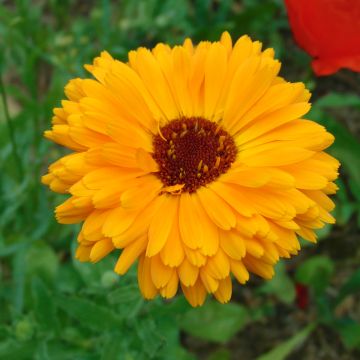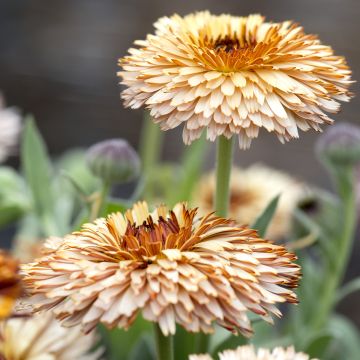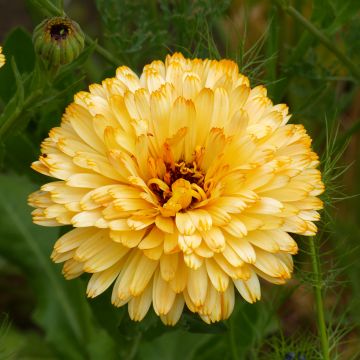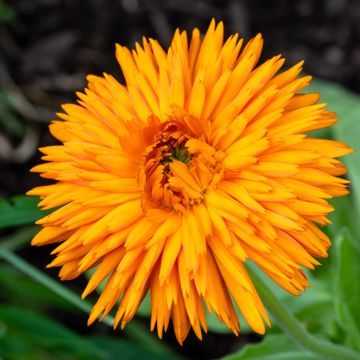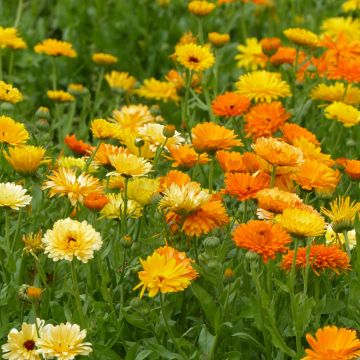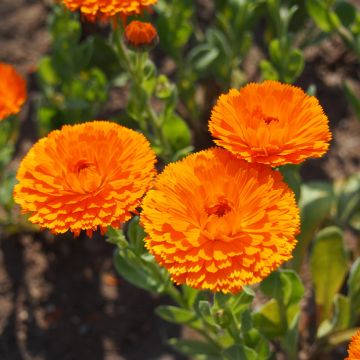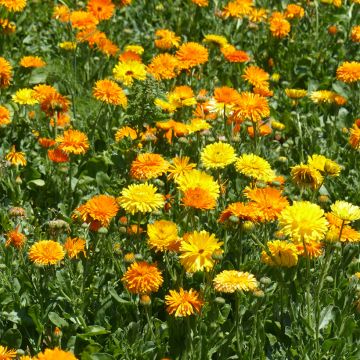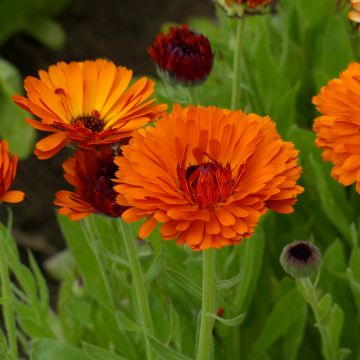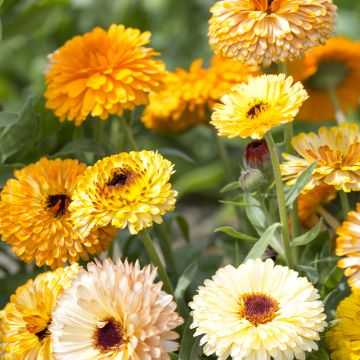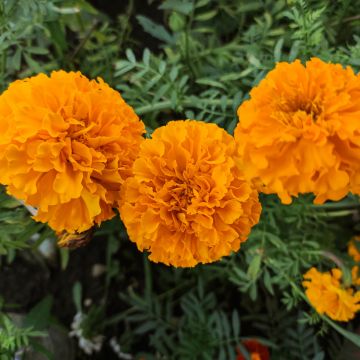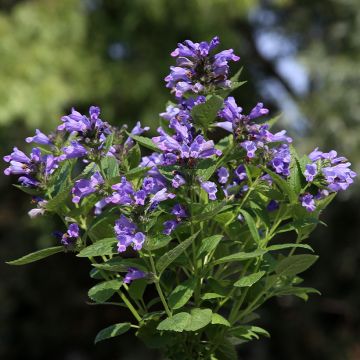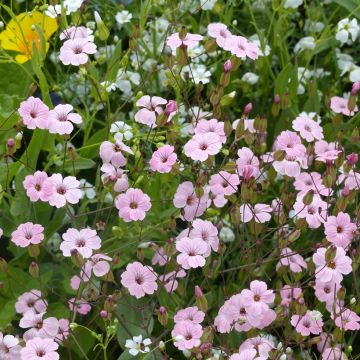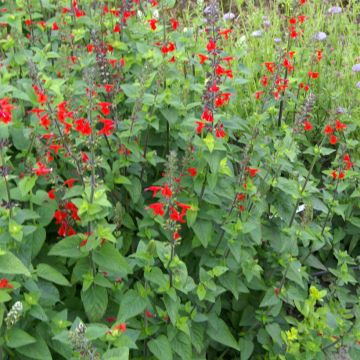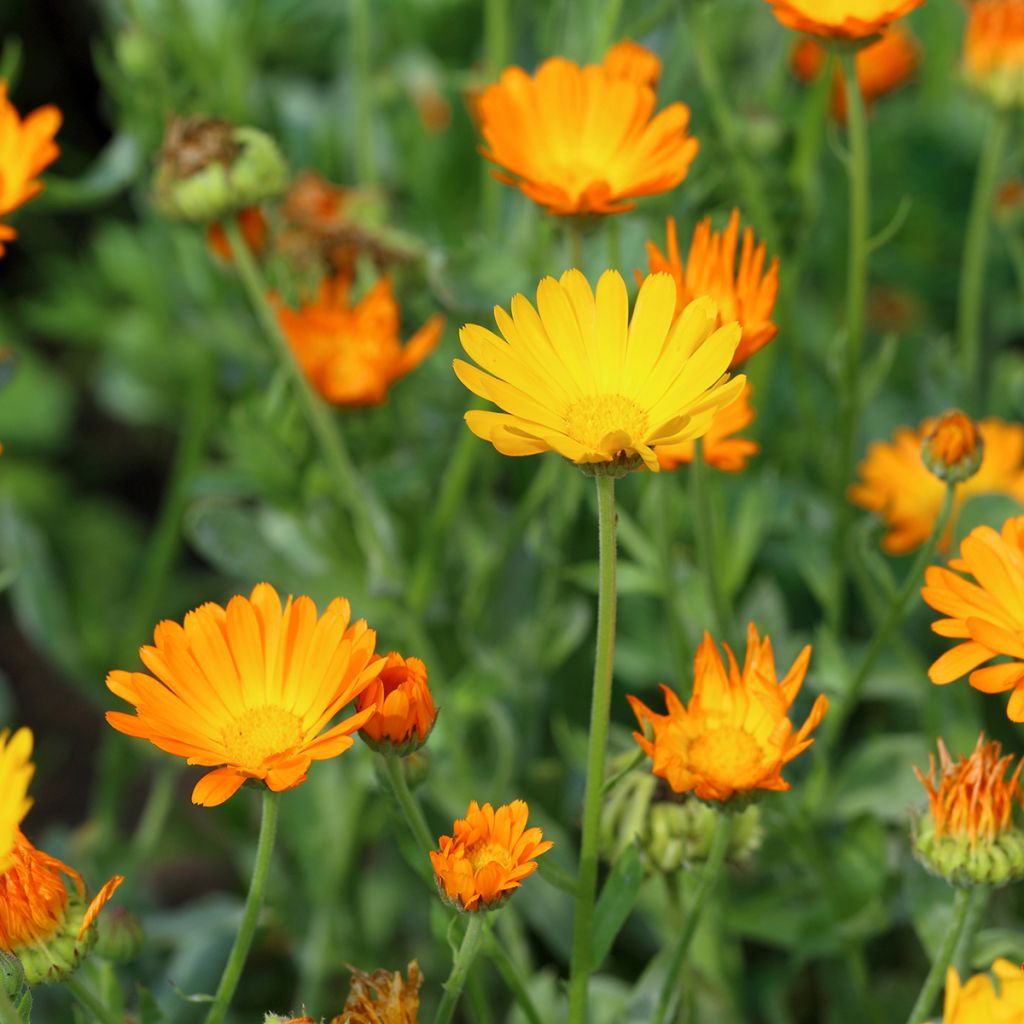

Souci officinal varié Bio - Ferme de Sainte Marthe
Organic Marigold - Calendula officinalis
Calendula officinalis
Marigold
Special offer!
Receive a €20 voucher for any order over €90 (excluding delivery costs, credit notes, and plastic-free options)!
1- Add your favorite plants to your cart.
2- Once you have reached €90, confirm your order (you can even choose the delivery date!).
3- As soon as your order is shipped, you will receive an email containing your voucher code, valid for 3 months (90 days).
Your voucher is unique and can only be used once, for any order with a minimum value of €20, excluding delivery costs.
Can be combined with other current offers, non-divisible and non-refundable.
Home or relay delivery (depending on size and destination)
Schedule delivery date,
and select date in basket
This plant carries a 6 months recovery warranty
More information
We guarantee the quality of our plants for a full growing cycle, and will replace at our expense any plant that fails to recover under normal climatic and planting conditions.
Would this plant suit my garden?
Set up your Plantfit profile →
Description
Calendula officinalis, also known as common marigold, is an annual plant that is both ornamental and edible. It is presented here as a mix of double and single flowers to sow. Its flowers are bright orange in colour. It is a medicinal plant, and also repels certain insects. Flowering starts in spring and continues regularly until the first frosts. It looks wonderful in flower beds. It also makes an excellent companion plant and can be grown in vegetable gardens where it repels whiteflies and aphids. It is easy to grow in any well-prepared soil, and appreciates the sun. The seeds are from Organic Agriculture.
Listed in gardens since the 12th century, Calendula officinalis has virtues that are used in many fields. It is primarily a dye plant, used as a pigment. It is also used in cosmetics, pharmacology, and homeopathy for its soothing, astringent, healing, anti-inflammatory, and hepatic properties, among others. Its nickname of false saffron comes from its culinary use. Marigolds can replace saffron by colouring rice-based dishes, stews, soups, and herbal teas. Use it raw to flavour cheeses, salads, and butter. Furthermore, it has long been established in the vegetable garden as an ally of other edible plants, as it repels nematodes and attracts numerous pollinating insects.
Its upright, slightly spreading habit is composed of brittle, branched stems that give it a rather bushy appearance. It naturally works well in flower beds and pots, whether isolated or in groups. However, protect it from strong winds. Its lanceolate leaves are velvety and aromatic when crushed. Their green colour forms a backdrop for the vibrant hues of its flowers. With their long semi-double to double petals, which are actually ligulate flowers, they surround a dark and warm central disc. They beautifully animate the garden by opening and closing under the influence of the sun throughout summer. The flowering period will be extended even further if you have a mild climate during autumn. Marigold seeds spread easily in various ways: through the wind, falling to the ground, and clinging to clothing and animal fur with their barbs. They self-seed quite spontaneously, as their germination is not hindered by the cold. Calendula is content with all types of soil, as long as it is in the sun for a good part of the day.
This 50cm (20in) tall calendula blends well with all wildflowers or romantic-looking flowers. It pairs perfectly with light grasses like stipa or panicums. It also works well with asters. Also consider the flat umbels of yarrows, the red or blue of sages, and the grey foliage of wormwoods.
Report an error about the product description
Flowering
Foliage
Plant habit
Botanical data
Calendula
officinalis
Asteraceae
Marigold
Central Europe
Other Marigold seeds
View all →Planting and care
The seeds can be sown directly in place from March onwards in mild regions. In cold regions, wait until the end of heavy frosts, as the seeds prefer temperatures close to 20°C (68°F). Choose a sunny location and loosen the soil slightly. Sow by broadcasting the seeds, covered with 1 or 2mm of soil. Lightly water. They will germinate in 5 to 10 days. You can thin them out, if necessary, spacing them 30cm (12in) apart.
However, if you are not concerned about winter frosts, you can start your sowings as early as September by sowing in pots and keeping them sheltered until spring. You can then transplant the shoots from March onwards in containers or directly in the ground to benefit from an early start.
Sowing period
Intended location
This item has not been reviewed yet - be the first to leave a review about it.
Similar products
Haven't found what you were looking for?
Hardiness is the lowest winter temperature a plant can endure without suffering serious damage or even dying. However, hardiness is affected by location (a sheltered area, such as a patio), protection (winter cover) and soil type (hardiness is improved by well-drained soil).

Photo Sharing Terms & Conditions
In order to encourage gardeners to interact and share their experiences, Promesse de fleurs offers various media enabling content to be uploaded onto its Site - in particular via the ‘Photo sharing’ module.
The User agrees to refrain from:
- Posting any content that is illegal, prejudicial, insulting, racist, inciteful to hatred, revisionist, contrary to public decency, that infringes on privacy or on the privacy rights of third parties, in particular the publicity rights of persons and goods, intellectual property rights, or the right to privacy.
- Submitting content on behalf of a third party;
- Impersonate the identity of a third party and/or publish any personal information about a third party;
In general, the User undertakes to refrain from any unethical behaviour.
All Content (in particular text, comments, files, images, photos, videos, creative works, etc.), which may be subject to property or intellectual property rights, image or other private rights, shall remain the property of the User, subject to the limited rights granted by the terms of the licence granted by Promesse de fleurs as stated below. Users are at liberty to publish or not to publish such Content on the Site, notably via the ‘Photo Sharing’ facility, and accept that this Content shall be made public and freely accessible, notably on the Internet.
Users further acknowledge, undertake to have ,and guarantee that they hold all necessary rights and permissions to publish such material on the Site, in particular with regard to the legislation in force pertaining to any privacy, property, intellectual property, image, or contractual rights, or rights of any other nature. By publishing such Content on the Site, Users acknowledge accepting full liability as publishers of the Content within the meaning of the law, and grant Promesse de fleurs, free of charge, an inclusive, worldwide licence for the said Content for the entire duration of its publication, including all reproduction, representation, up/downloading, displaying, performing, transmission, and storage rights.
Users also grant permission for their name to be linked to the Content and accept that this link may not always be made available.
By engaging in posting material, Users consent to their Content becoming automatically accessible on the Internet, in particular on other sites and/or blogs and/or web pages of the Promesse de fleurs site, including in particular social pages and the Promesse de fleurs catalogue.
Users may secure the removal of entrusted content free of charge by issuing a simple request via our contact form.
The flowering period indicated on our website applies to countries and regions located in USDA zone 8 (France, the United Kingdom, Ireland, the Netherlands, etc.)
It will vary according to where you live:
- In zones 9 to 10 (Italy, Spain, Greece, etc.), flowering will occur about 2 to 4 weeks earlier.
- In zones 6 to 7 (Germany, Poland, Slovenia, and lower mountainous regions), flowering will be delayed by 2 to 3 weeks.
- In zone 5 (Central Europe, Scandinavia), blooming will be delayed by 3 to 5 weeks.
In temperate climates, pruning of spring-flowering shrubs (forsythia, spireas, etc.) should be done just after flowering.
Pruning of summer-flowering shrubs (Indian Lilac, Perovskia, etc.) can be done in winter or spring.
In cold regions as well as with frost-sensitive plants, avoid pruning too early when severe frosts may still occur.
The planting period indicated on our website applies to countries and regions located in USDA zone 8 (France, United Kingdom, Ireland, Netherlands).
It will vary according to where you live:
- In Mediterranean zones (Marseille, Madrid, Milan, etc.), autumn and winter are the best planting periods.
- In continental zones (Strasbourg, Munich, Vienna, etc.), delay planting by 2 to 3 weeks in spring and bring it forward by 2 to 4 weeks in autumn.
- In mountainous regions (the Alps, Pyrenees, Carpathians, etc.), it is best to plant in late spring (May-June) or late summer (August-September).
The harvesting period indicated on our website applies to countries and regions in USDA zone 8 (France, England, Ireland, the Netherlands).
In colder areas (Scandinavia, Poland, Austria...) fruit and vegetable harvests are likely to be delayed by 3-4 weeks.
In warmer areas (Italy, Spain, Greece, etc.), harvesting will probably take place earlier, depending on weather conditions.
The sowing periods indicated on our website apply to countries and regions within USDA Zone 8 (France, UK, Ireland, Netherlands).
In colder areas (Scandinavia, Poland, Austria...), delay any outdoor sowing by 3-4 weeks, or sow under glass.
In warmer climes (Italy, Spain, Greece, etc.), bring outdoor sowing forward by a few weeks.































